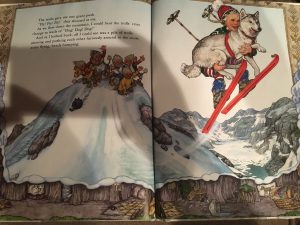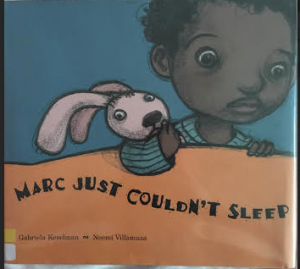![IMG_9611 [405969]](https://blogs.iwu.edu/lrbmt2016/files/2016/05/IMG_9611-405969-300x210.jpg) Authors: Phillip and Hannah Hoose
Authors: Phillip and Hannah Hoose
Illustrator: Debbie Tilley
Publisher and Year: Tricycle Press, 1998
Number of Pages: 22
Genre: Fantasy/Poetry
![IMG_9613 [405970]](https://blogs.iwu.edu/lrbmt2016/files/2016/05/IMG_9613-405970-300x148.jpg) Analysis:“Hey, Little Ant” is a story about a child that contemplates whether or not he should spare an ant’s life. After putting himself in the ant’s shoes, the boy sees that maybe he shouldn’t squish the bug after all. This text could primarily work as a window. It is common in America to carelessly step on small bugs, such as ants. This book could give us a glimpse of the bug’s perspective. This book also allows children to step out of the egocentric world that they live in, where everything is “I view it this way, so that’s how it must be.” In the story, the power somewhat shifts from the big and mighty kid to the ant, who ultimately could’ve convinced the boy not to step on him. When the ant tells the kid to imagine that he was the ant and the ant the kid, the boy starts to feel for the ant.
Analysis:“Hey, Little Ant” is a story about a child that contemplates whether or not he should spare an ant’s life. After putting himself in the ant’s shoes, the boy sees that maybe he shouldn’t squish the bug after all. This text could primarily work as a window. It is common in America to carelessly step on small bugs, such as ants. This book could give us a glimpse of the bug’s perspective. This book also allows children to step out of the egocentric world that they live in, where everything is “I view it this way, so that’s how it must be.” In the story, the power somewhat shifts from the big and mighty kid to the ant, who ultimately could’ve convinced the boy not to step on him. When the ant tells the kid to imagine that he was the ant and the ant the kid, the boy starts to feel for the ant.
Perceptually, the emphasis on the boy’s size compared to the ant really shows how superior we, as humans, feel to bugs and nature. This book is a very rhythmic book so that younger students can read it easier. Specific words bolded for emphasis, and bright colors are used as attention grabbers and positivity. The book also ends with a cliffhanger: Does the boy squish the ant?
Structurally, the child is enormous compared to the ant. The ant is always pictured very small, meaning he is weak. On the other hand, the child is very large, meaning he is the strong character. At one point, the ant and child switch sizes—perhaps a power swap.
Ideologically, this book teaches readers that empathy and kindness are great traits to have.


















